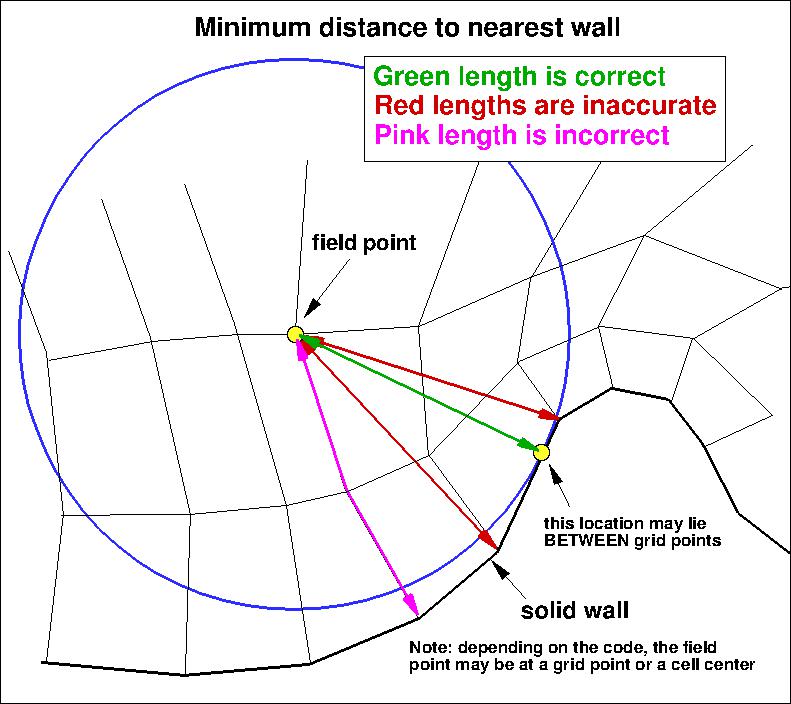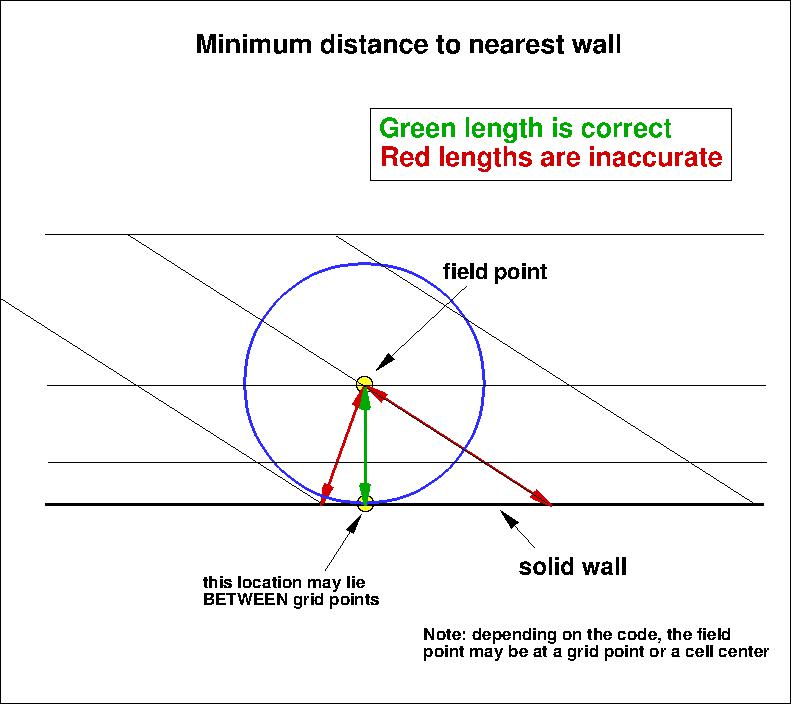Results are shown here from 3 compressible codes
so that the user may compare their own compressible code results. Multiple grids were
used so the user can see trends with grid refinement. Different codes will behave
differently with grid refinement depending on many factors (including code order of accuracy
and other numerics),
but it would be expected that as the grid is refined the results
will tend toward an "infinite grid" solution that is the same.
Be careful when comparing details: any differences in boundary conditions or flow conditions
may affect results.
Three independent compressible RANS codes,
CFL3D, TAU, and FUN3D, were used to compute this
bump-in-channel flow with the SSG/LRR-RSM-w2012 model
(see full description on
SSG/LRR Full Reynolds Stress Model page).
The full series of 5 grids were used.
CFL3D is a cell-centered structured-grid code (NASA),
TAU is a node-centered unstructured-grid code (DLR), and FUN3D
is a node-centered unstructured-grid code (NASA).
Both CFL3D and FUN3D used Roe's Flux Difference
Splitting and a UMUSCL upwind approach.
In CFL3D its standard UMUSCL (kappa=0.33333) scheme was
used, whereas in FUN3D the 3-D mixed-element default UMUSCL 0.5 was used.
TAU was run using central discretization with artificial
matrix dissipation for the mean flow equations and upwinding for the turbulence equations.
All codes were run with
full Navier-Stokes (as opposed to thin-layer, which is CFL3D's default mode of operation),
and all codes used first-order upwinding for the advective terms of the turbulence model.
Details about the codes can be found on their respective websites
(CFL3D,
TAU,
FUN3D).
The codes were not run to machine-zero iterative convergence, but an attempt was made to converge
sufficiently so that results of interest were well within normal engineering tolerance and
plotting accuracy. For example, for CFL3D the density residual was typically
driven down below 10-12. It should be kept in mind that many of the files given below
contain computed values directly from the codes,
using a precision greater than the convergence tolerance (i.e., the values
in the files are not necessarily as precise as the number of digits given).
For the CFL3D and FUN3D tests reported below, the turbulent inflow boundary conditions used for SSG/LRR-RSM-w2012
were the following:

(meaning that  ),
),

and

The above equations represent the "standard" SSG/LRR-RSM-w2012 boundary condition
values used by CFL3D and FUN3D. In terms of freestream turbulence intensity (Tu) and freestream eddy viscosity, these
boundary conditions for this particular problem (with M=0.2) correspond to:
Tu=0.039% and  .
The freestream values used by TAU were
Tu=0.1% and
.
The freestream values used by TAU were
Tu=0.1% and  .
For freestream BCs, all codes assume isotropic turbulence conditions (identical normal stresses, zero diagonal stresses).
.
For freestream BCs, all codes assume isotropic turbulence conditions (identical normal stresses, zero diagonal stresses).
For the interested reader, typical input files for this problem are given here:
CFL3D:
TAU:
FUN3D:
For this flow, an odd-even decoupling occurs in FUN3D on the finest grid using the default unweighted least-square
gradient. This decoupling is particularly noticeable, for example, in plots of Cp along a spanwise grid line
somewhat upstream of the bump peak.
Preliminary studies indicate the decoupling is associated with gradients near the inflection point
in the bump surface.
Although not done for the results below, the decoupling can be eliminated in FUN3D
by using a mapping method based on distance from the surface for
the mean flow inviscid fluxes. See the
3D Modified Bump-in-channel Validation case
for SA-neg in the Turbulence Model Numerical Analysis section of this website.
Also see AIAA paper 2016-0858,
https://doi.org/10.2514/6.2016-0858.
The following plots show: (1) total drag coefficient, (2) pressure drag coefficient,
(3) viscous drag coefficient, and (4) total lift coefficient for the 3D bump.
Both codes are tending toward similar integrated force coefficient values
as the grid is refined.
Using the uncertainty estimation procedure from the Fluids Engineering Division of the ASME (Celik, I. B.,
Ghia, U., Roache, P. J., Freitas, C. J., Coleman, H., Raad, P. E.,
"Procedure for Estimation and Reporting of Uncertainty Due
to Discretization in CFD Applications," Journal of Fluids Engineering, Vol. 130, July 2008, 078001, https://doi.org/10.1115/1.2960953), described in Summary of Uncertainty Procedure,
the finest 3 grids yield the following:
| Code |
Quantity |
Computed apparent order, p |
Approx rel fine-grid error, ea21 |
Extrap rel fine-grid error, eext21 |
Fine-grid convergence index, GCIfine21 |
| CFL3D |
Cd |
3.07 |
0.716% |
0.097% |
8.406% |
| CFL3D |
Cd,p |
3.08 |
6.142% |
0.828% |
72.817% |
| CFL3D |
Cd,v |
3.23 |
0.084% |
0.010% |
1.084% |
| CFL3D |
CL |
1.28 |
0.567% |
0.396% |
0.497% |
| TAU |
Cd |
3.82 |
0.215% |
0.016% |
4.057% |
| TAU |
Cd,p |
3.01 |
3.958% |
0.564% |
0.702% |
| TAU |
Cd,v |
1.86 |
0.339% |
0.128% |
0.161% |
| TAU |
CL |
1.42 |
0.119% |
0.071% |
0.089% |
| FUN3D |
Cd |
2.89 |
1.286% |
0.201% |
0.251% |
| FUN3D |
Cd,p |
2.92 |
10.774% |
1.668% |
2.051% |
| FUN3D |
Cd,v |
3.24 |
0.120% |
0.014% |
1.573% |
| FUN3D |
CL |
1.13 |
0.348% |
0.293% |
0.367% |
The data file that generated the above plots is given here:
force_convergence_ssglrrrsm.dat.
The surface pressure coefficient from all three codes on the second-finest
33 x 353 x 161 grid
over the bump wall and at y=0 is shown in the next plots.
All codes yield nearly identical results.
The data files that generated the above plots are given here:
cp_surface_ssglrrrsm_cfl3d.dat.gz,
cp_y0_ssglrrrsm_cfl3d.dat.gz,
cp_surface_ssglrrrsm_tau.dat.gz,
cp_y0_ssglrrrsm_tau.dat.gz,
cp_surface_ssglrrrsm_fun3d.dat.gz,
cp_y0_ssglrrrsm_fun3d.dat.gz.
Note that these are all gzipped
Tecplot
formatted files, so you must either have Tecplot or know how to read their format in order to use these
files.
Contours of the nondimensional Reynolds stress variables
( ) as well as
nondimensional omega from the two codes CFL3D and TAU on the second-finest grid are shown
in the following plots.
Results are extracted at two different x-locations
(z-scale expanded for clarity). Results from the codes are reasonably similar on this grid size
(FUN3D results are not shown here to save space; its results are also similar).
(Note legends do not necessarily reflect min and max values.)
) as well as
nondimensional omega from the two codes CFL3D and TAU on the second-finest grid are shown
in the following plots.
Results are extracted at two different x-locations
(z-scale expanded for clarity). Results from the codes are reasonably similar on this grid size
(FUN3D results are not shown here to save space; its results are also similar).
(Note legends do not necessarily reflect min and max values.)
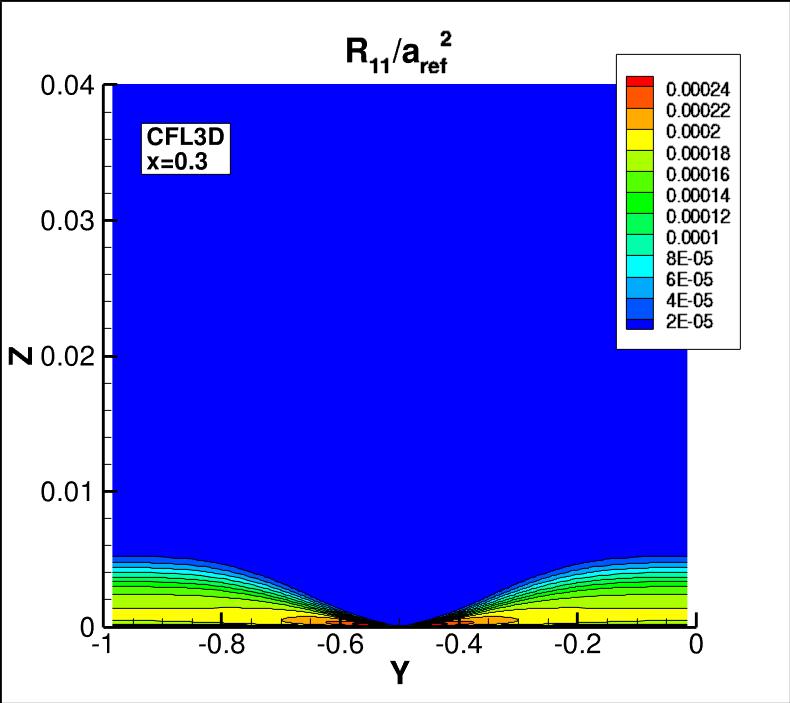
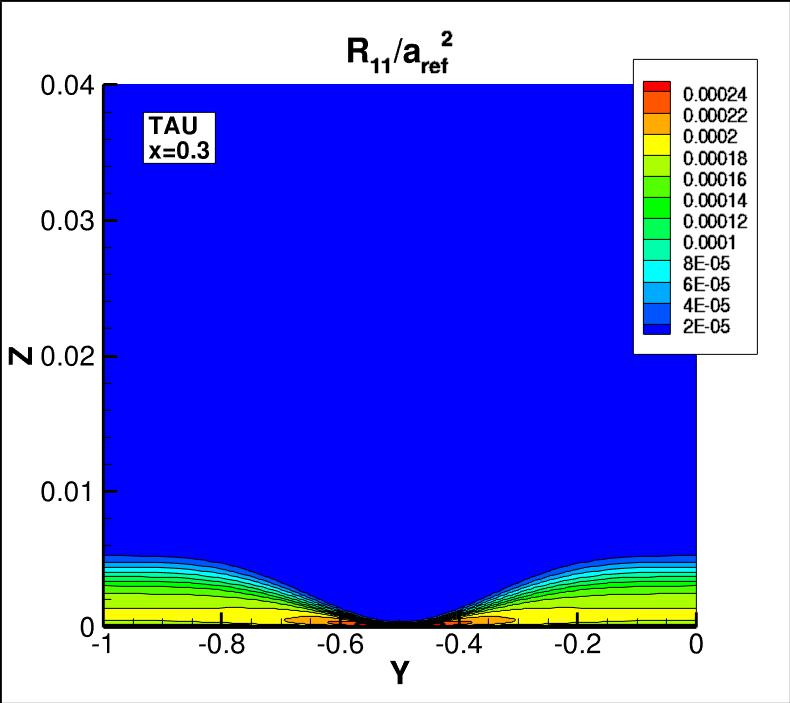
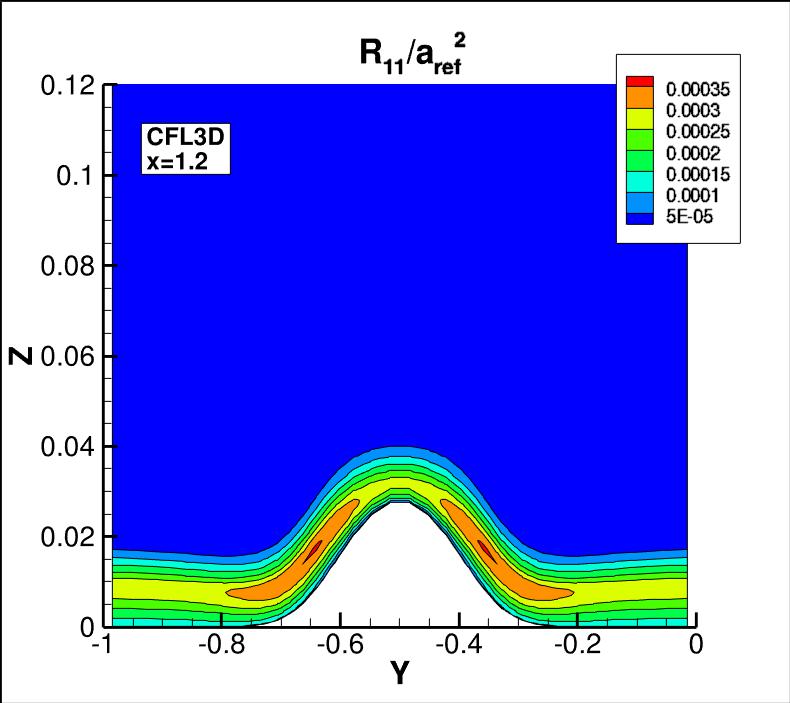
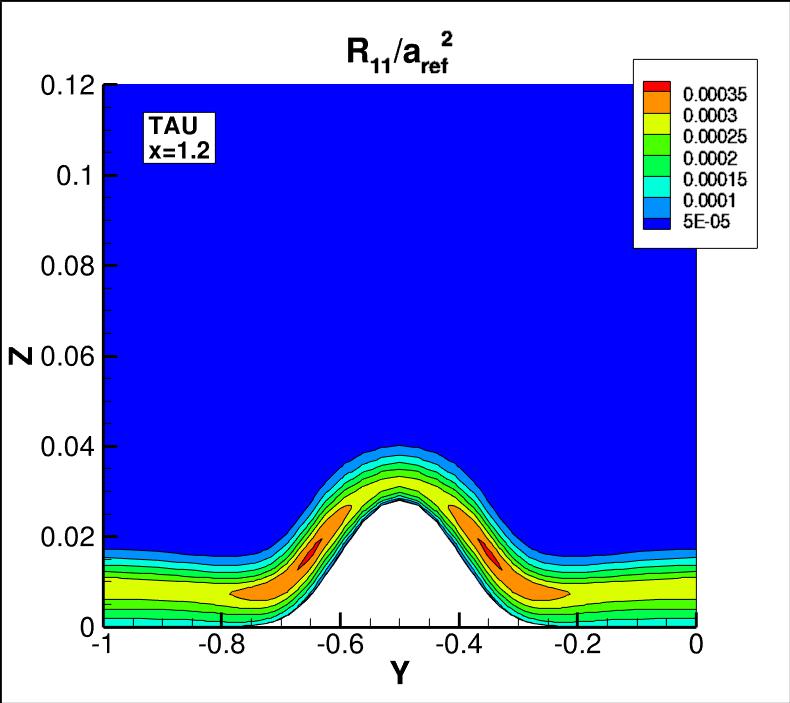
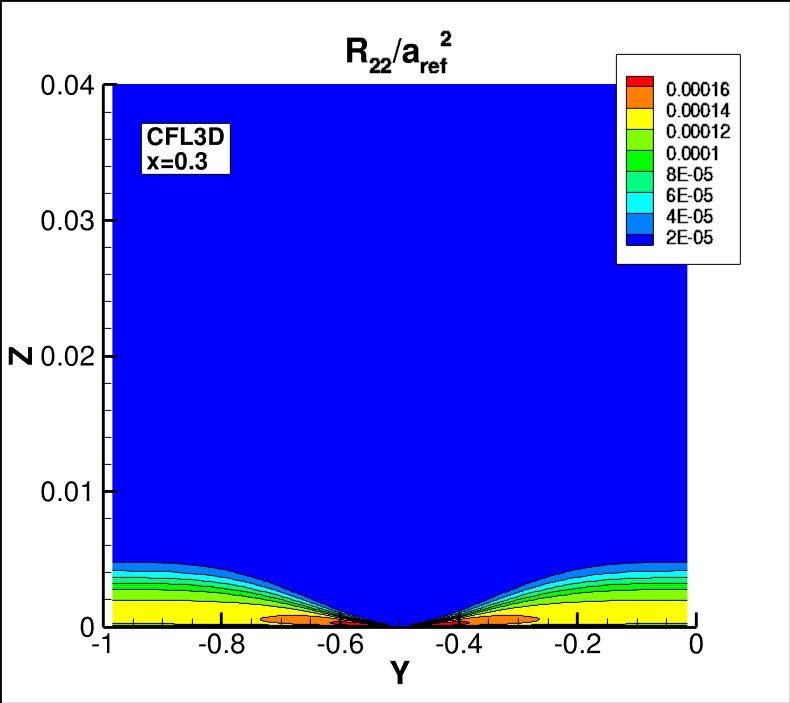
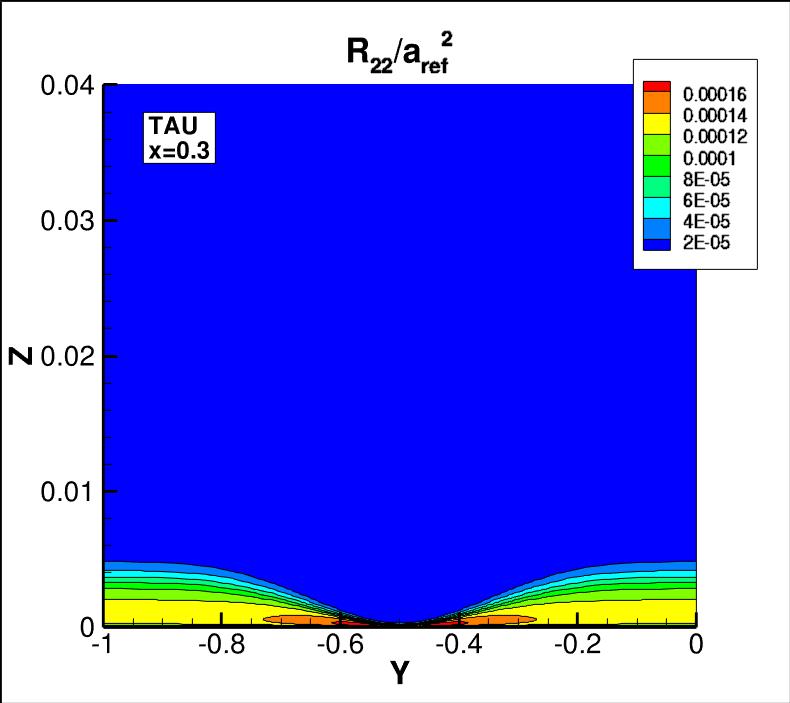
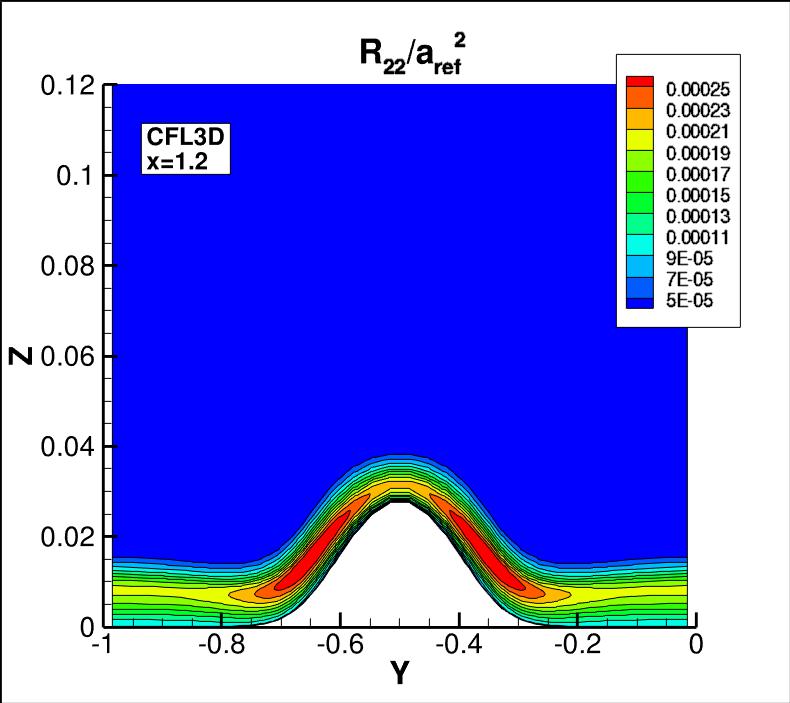
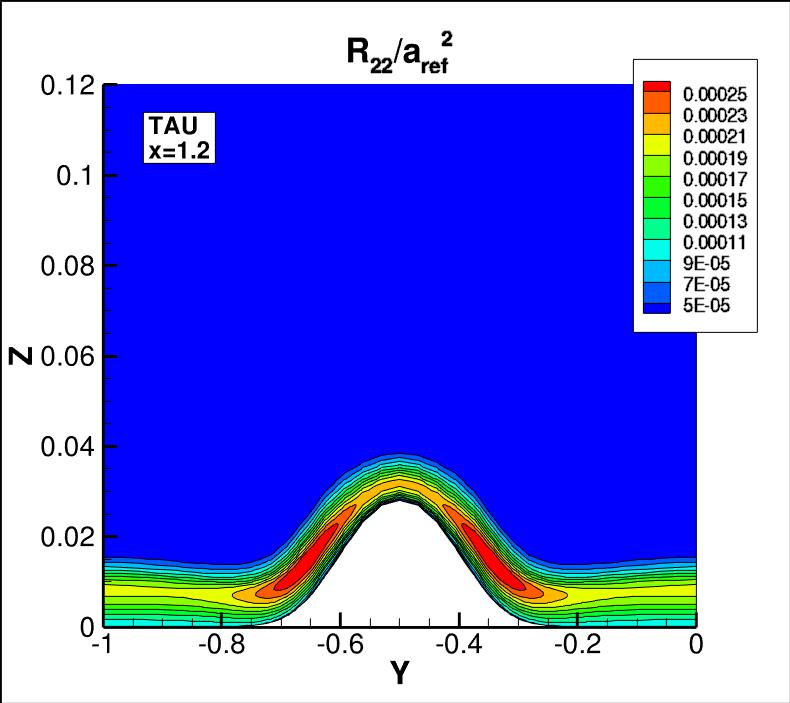
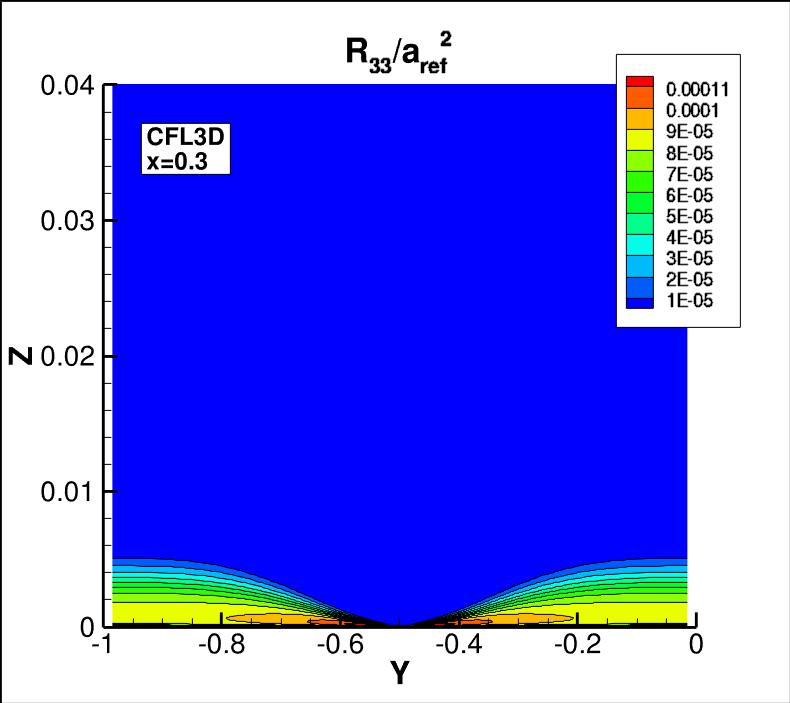
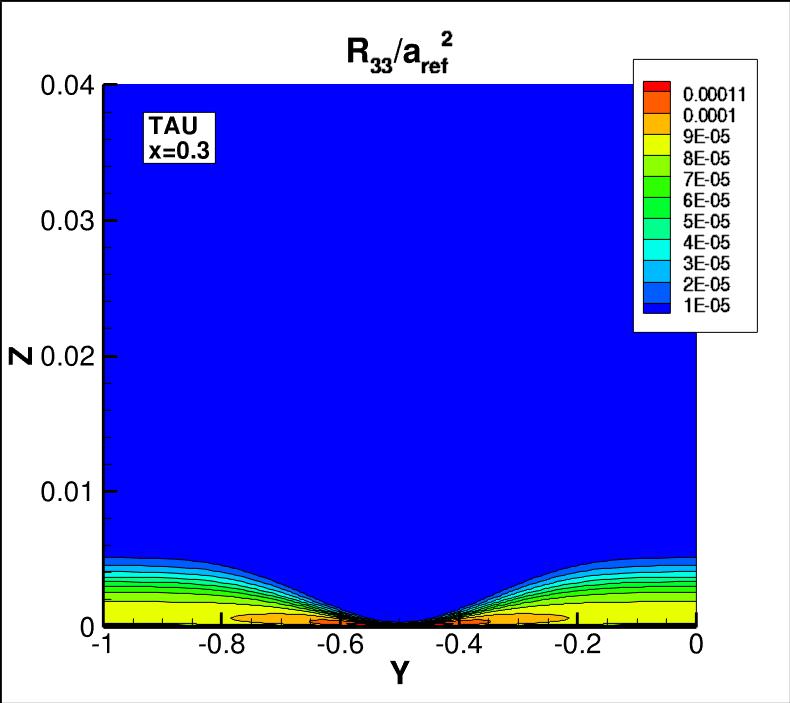
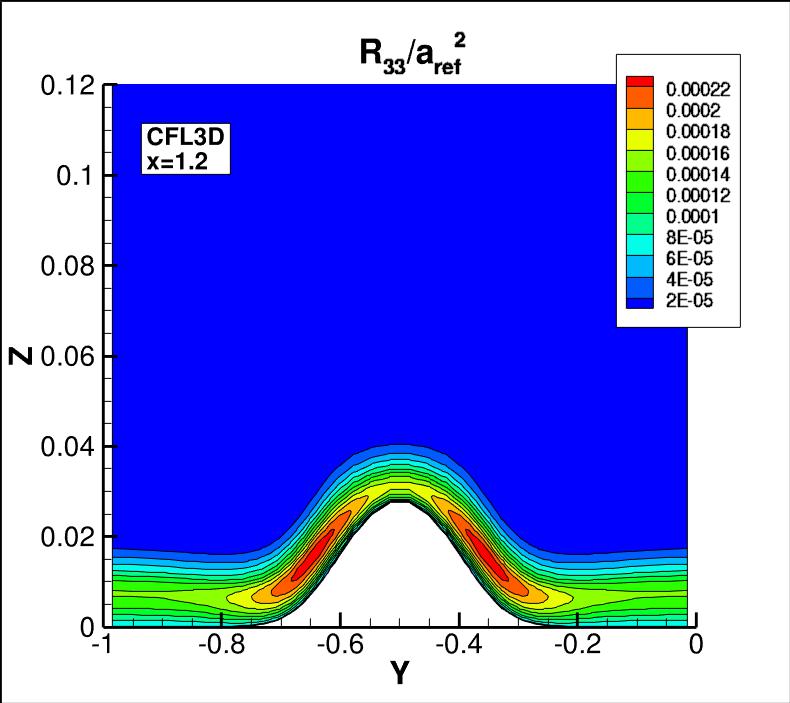
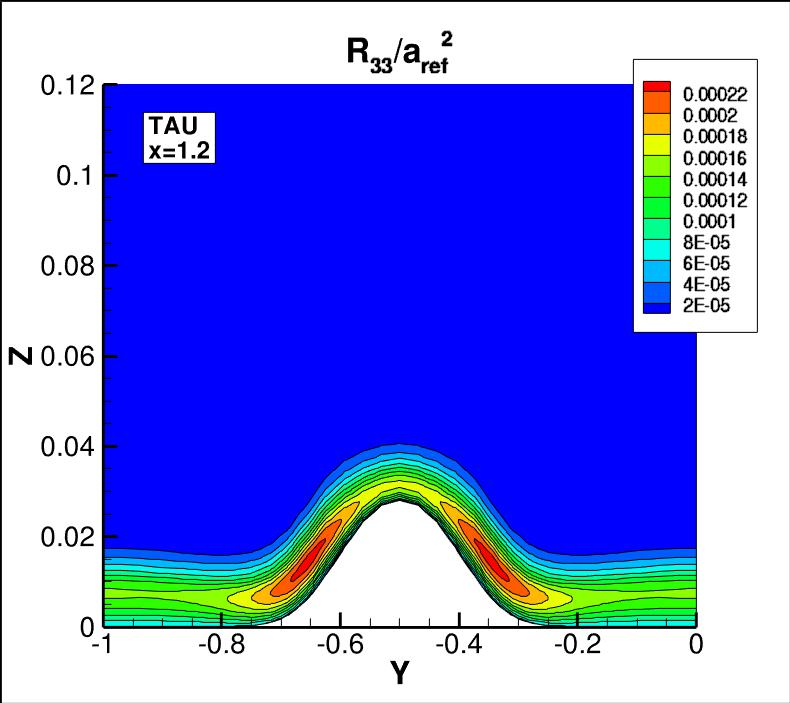
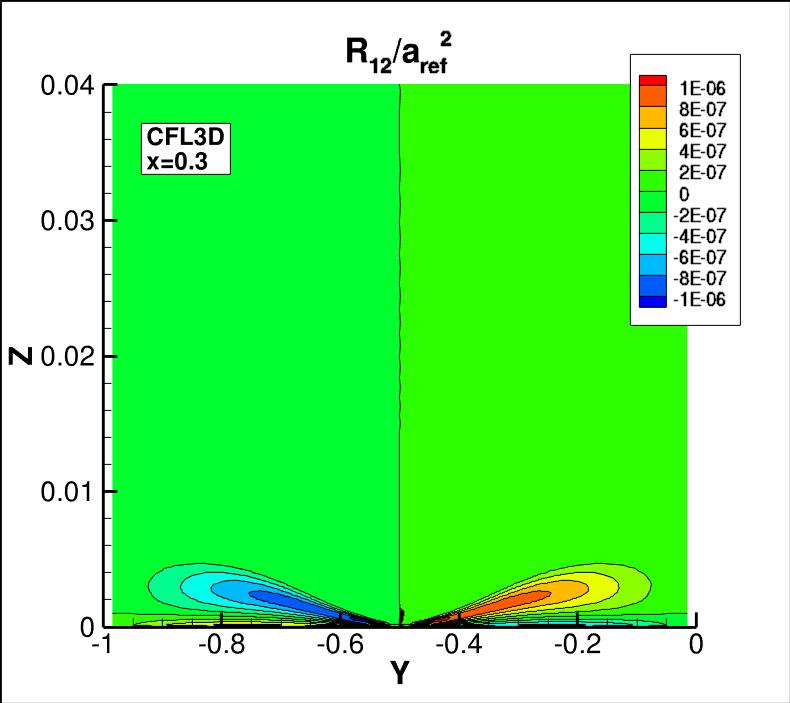
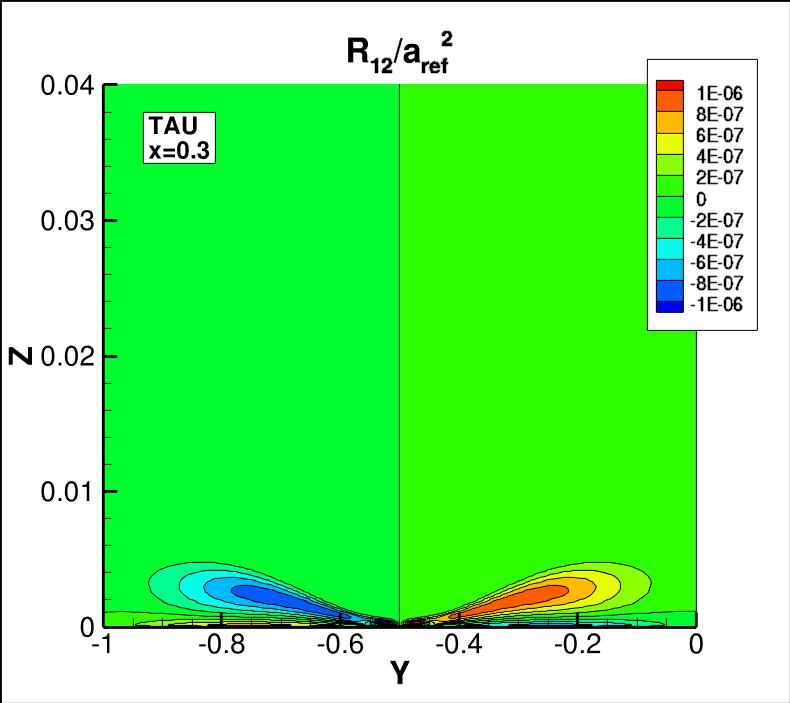
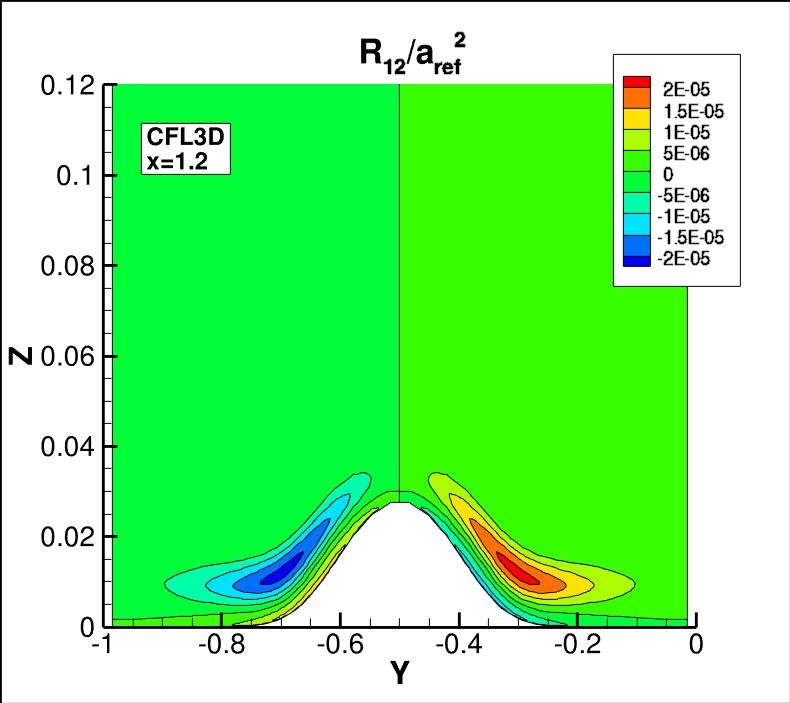

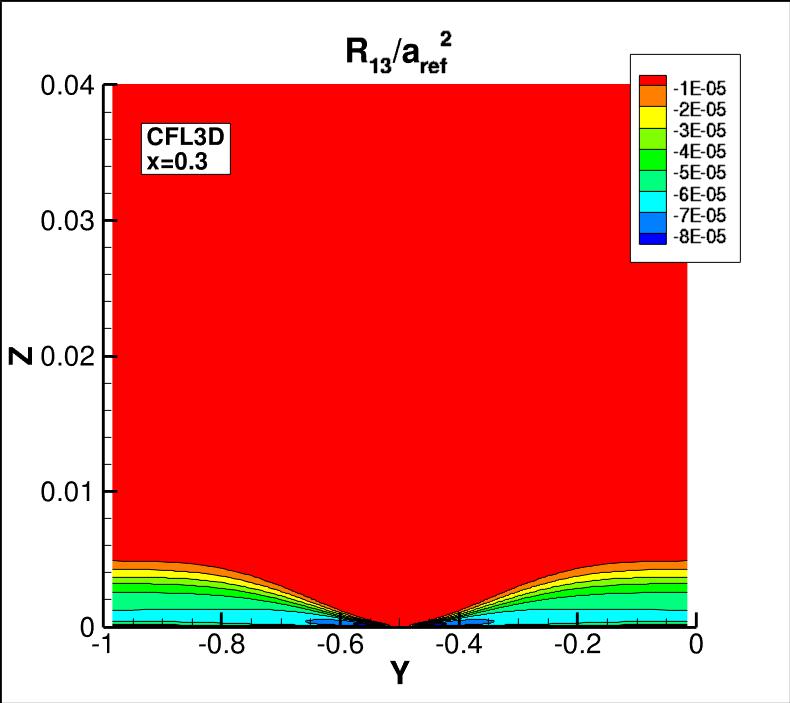
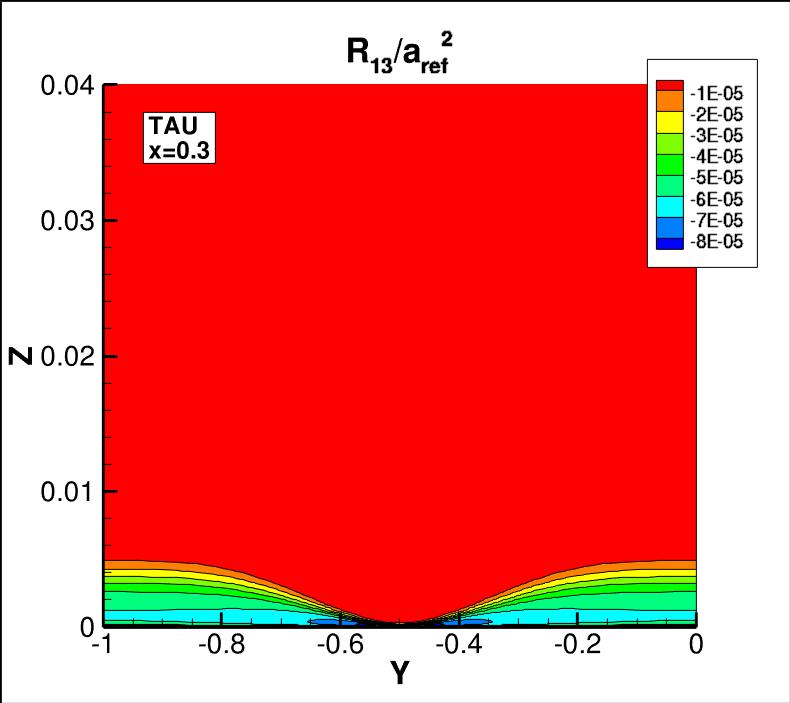
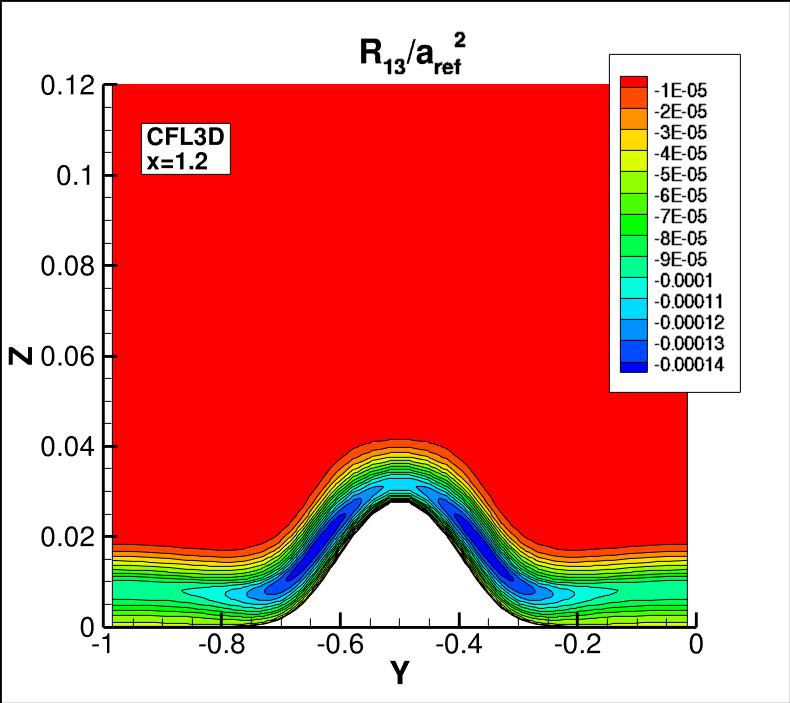
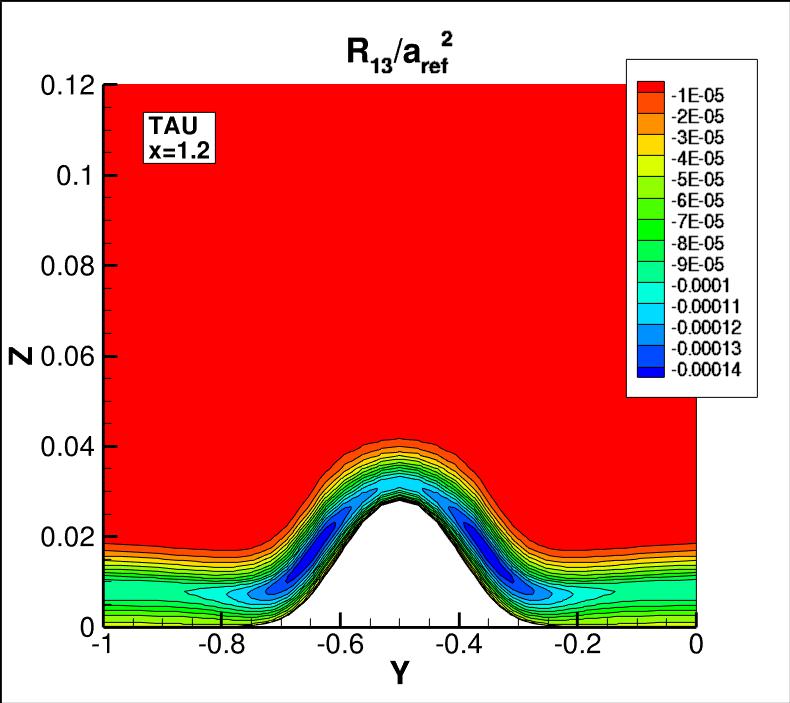
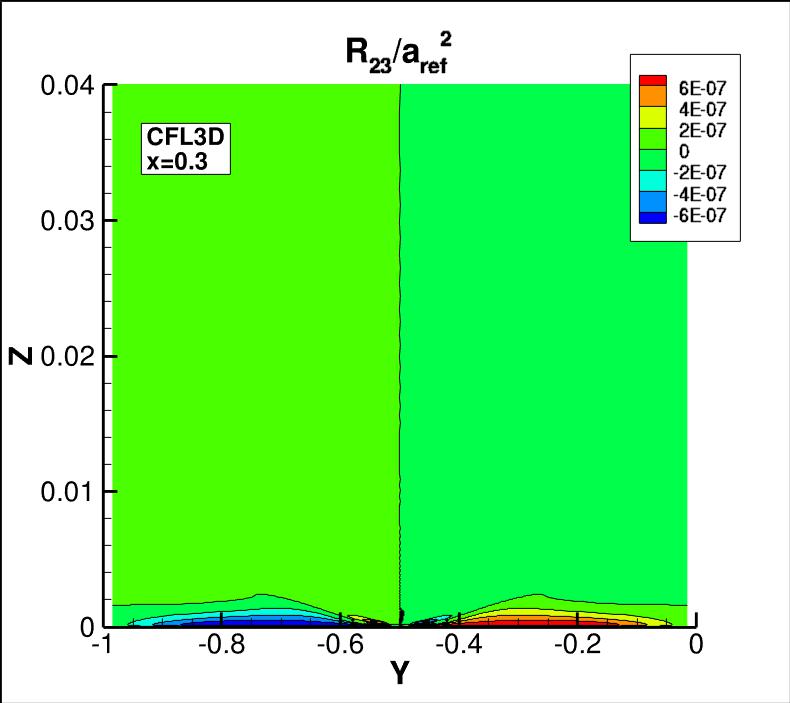
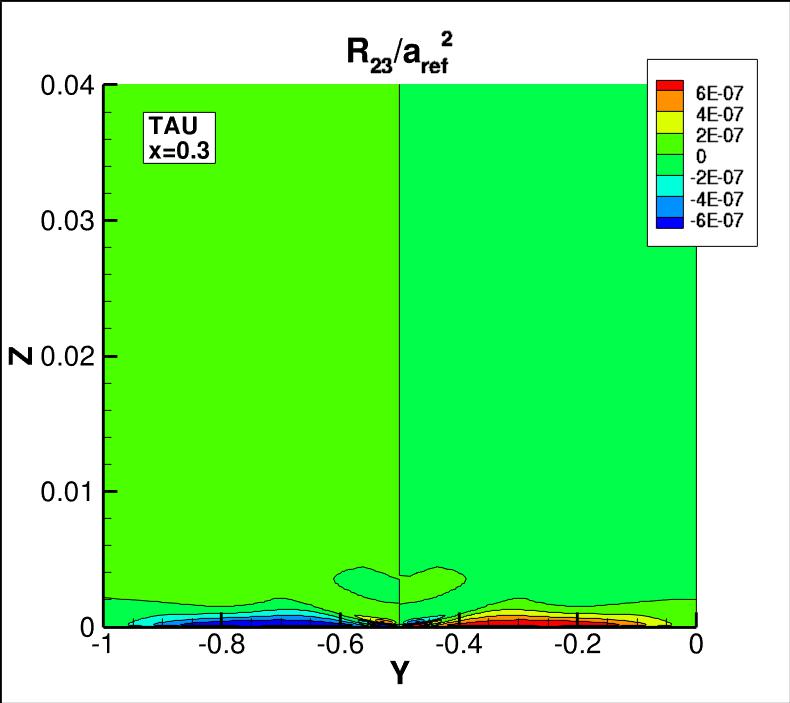
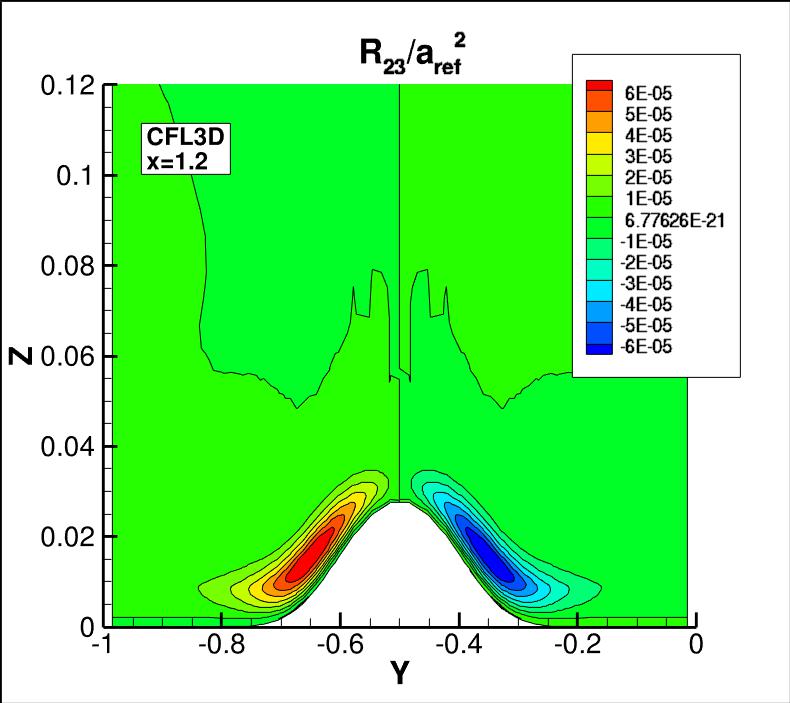
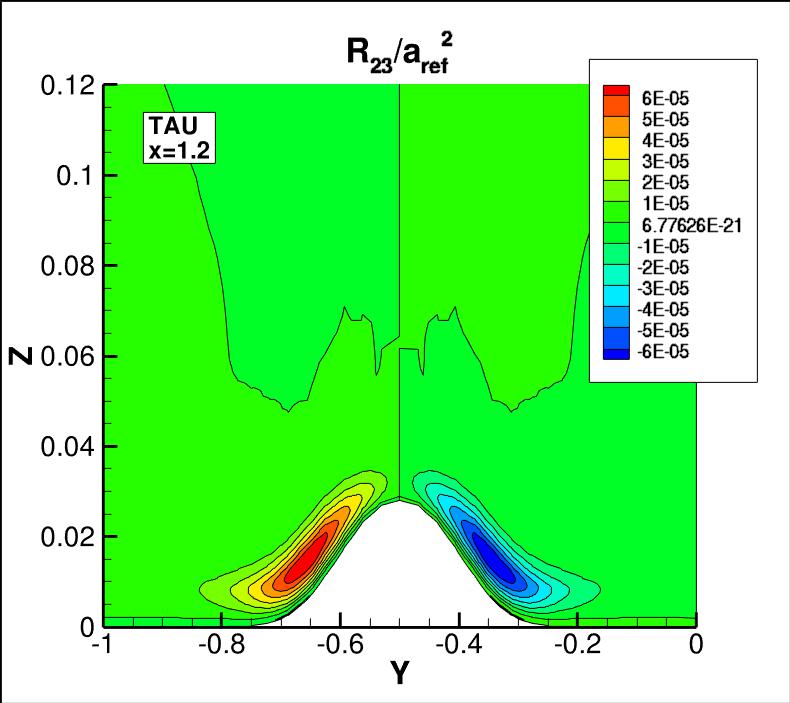
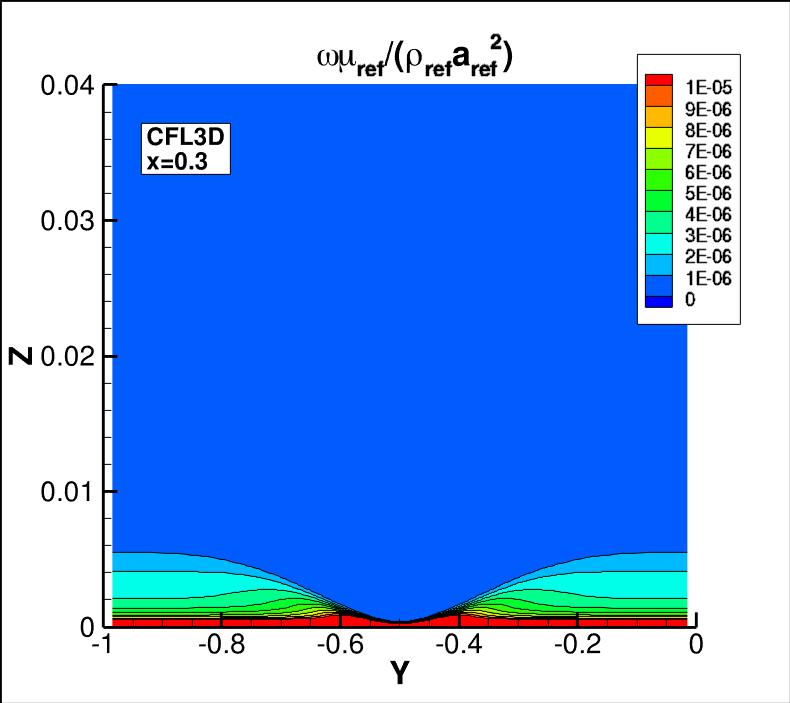
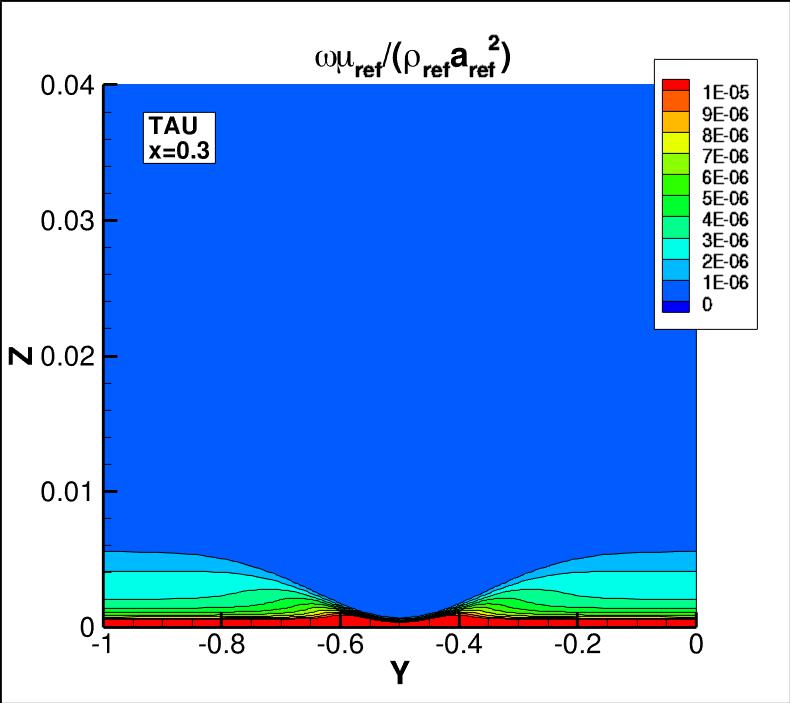
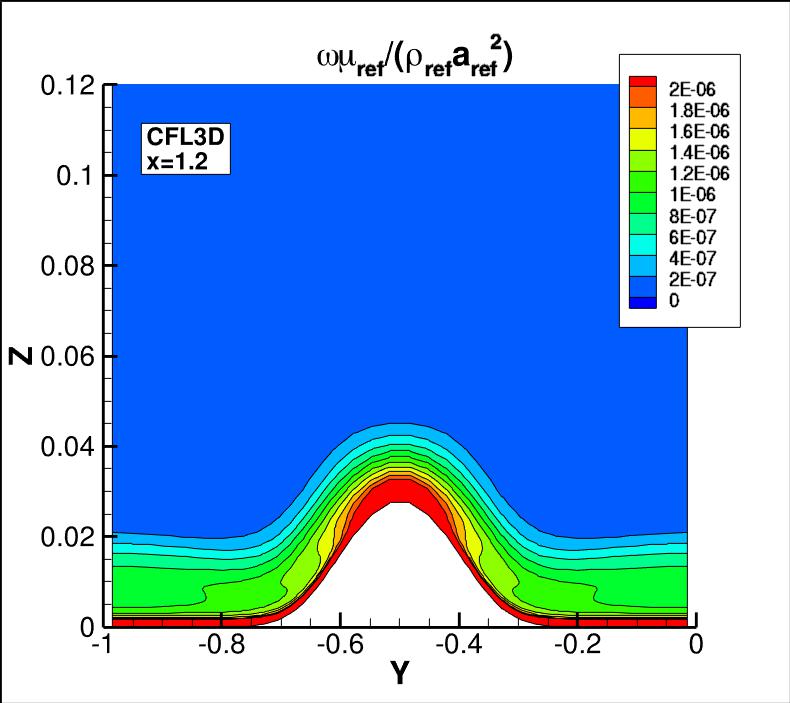
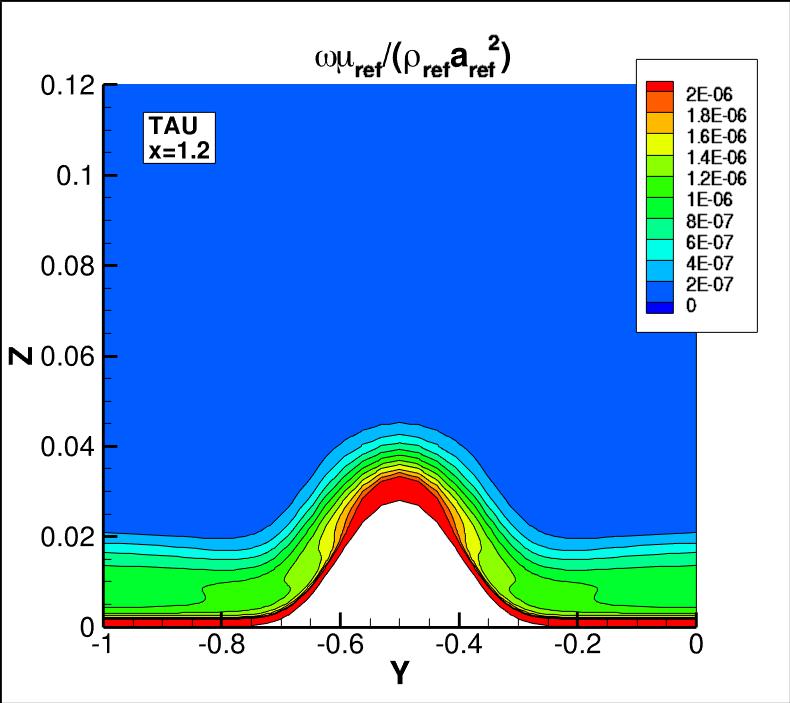
The data files that generated the above plots are given here:
turb_contours_cfl3d_ssglrrrsm_x0.3.dat.gz,
turb_contours_tau_ssglrrrsm_x0.3.dat.gz,
turb_contours_cfl3d_ssglrrrsm_x1.2.dat.gz,
turb_contours_tau_ssglrrrsm_x1.2.dat.gz.
Note that these are all gzipped
Tecplot
formatted files, so you must either have Tecplot or know how to read their format
in order to use these files.
Also note that the slicing tool in Tecplot was used to generate this data,
extracting data along x-constant planes. These cutting planes do not necessarily
coincide with grid locations. Thus, the x, y, and z locations
given in the data files do not reflect actual points in
the grid used.
The SSG/LRR-RSM-w2012 model relies on the minimum distance to the nearest wall.
It is important to note that computing minimum distance by searching along grid lines is
incorrect, and is not the same as computing actual minimum distance to the nearest wall for this grid.
The following sketches
demonstrate the concept of minimum distance (in 2-D). Improperly-calculated minimum distance
functions will particularly produce incorrect results for cases in which the
grid lines are not perfectly normal to the body surface.
Note that when the nearest wall point is a sharp convex corner or edge (like an airfoil or wing trailing edge) then the
correct minimum distance is the distance to that corner or edge, which is not a wall normal.
Return to: 3D Bump-in-channel Verification Case Intro Page
Return to: Turbulence Modeling Resource Home Page
Recent significant updates:
07/18/2018 - added note regarding odd-even decoupling in FUN3D on finest grid for this case
Privacy Act Statement
Accessibility Statement
Responsible NASA Official:
Ethan Vogel
Page Curator:
Clark Pederson
Last Updated: 03/01/2023


 ),
),


 .
The freestream values used by TAU were
Tu=0.1% and
.
The freestream values used by TAU were
Tu=0.1% and  .
For freestream BCs, all codes assume isotropic turbulence conditions (identical normal stresses, zero diagonal stresses).
.
For freestream BCs, all codes assume isotropic turbulence conditions (identical normal stresses, zero diagonal stresses).
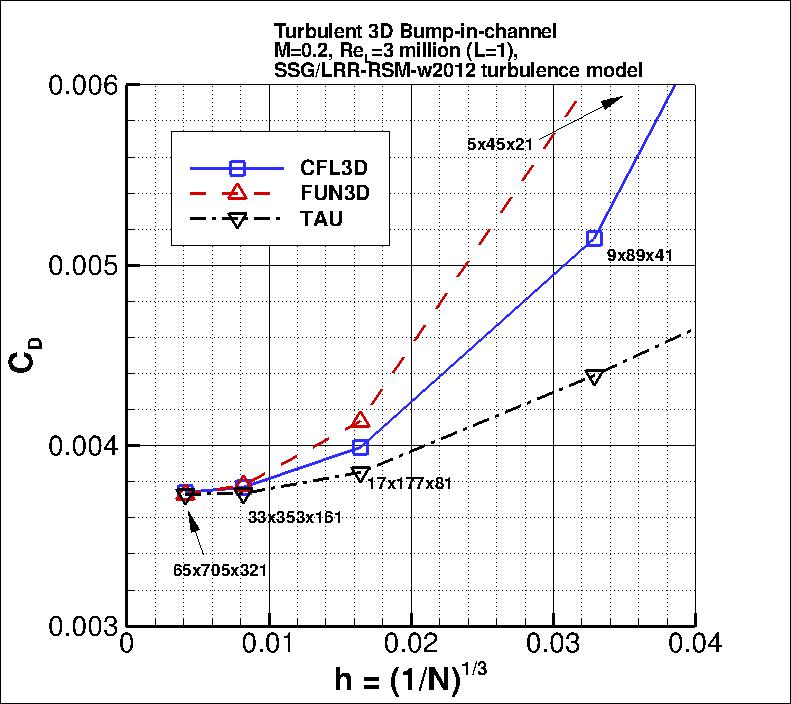

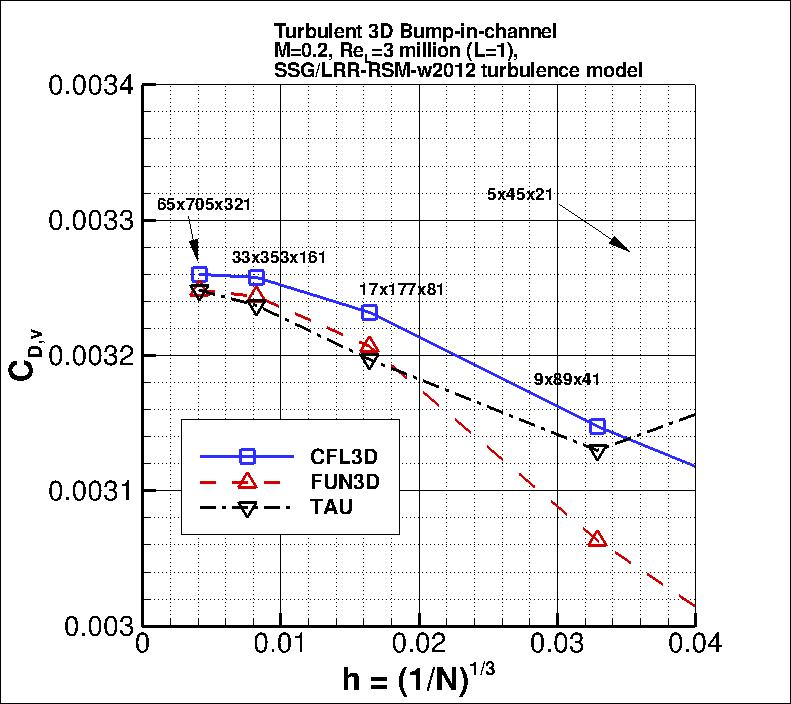
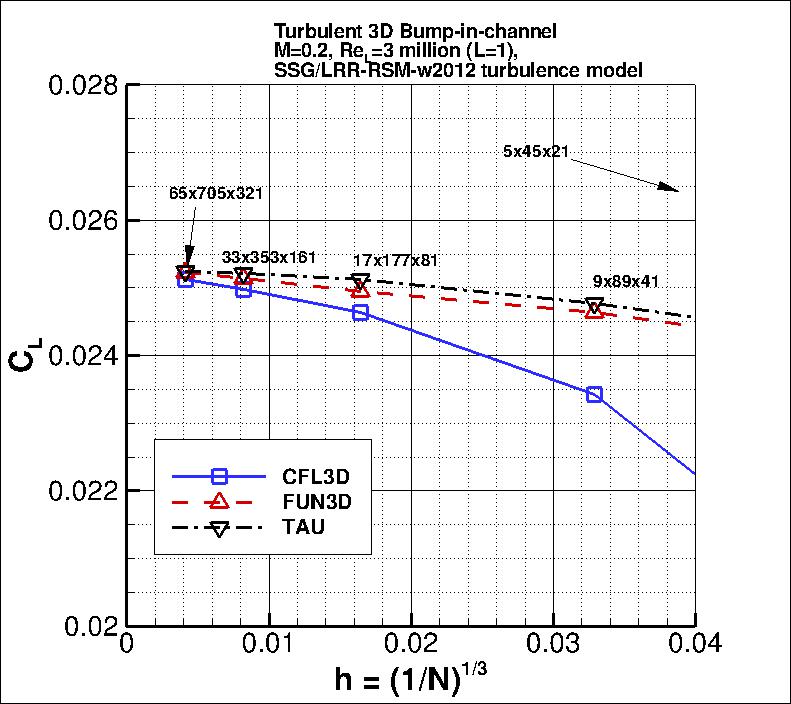
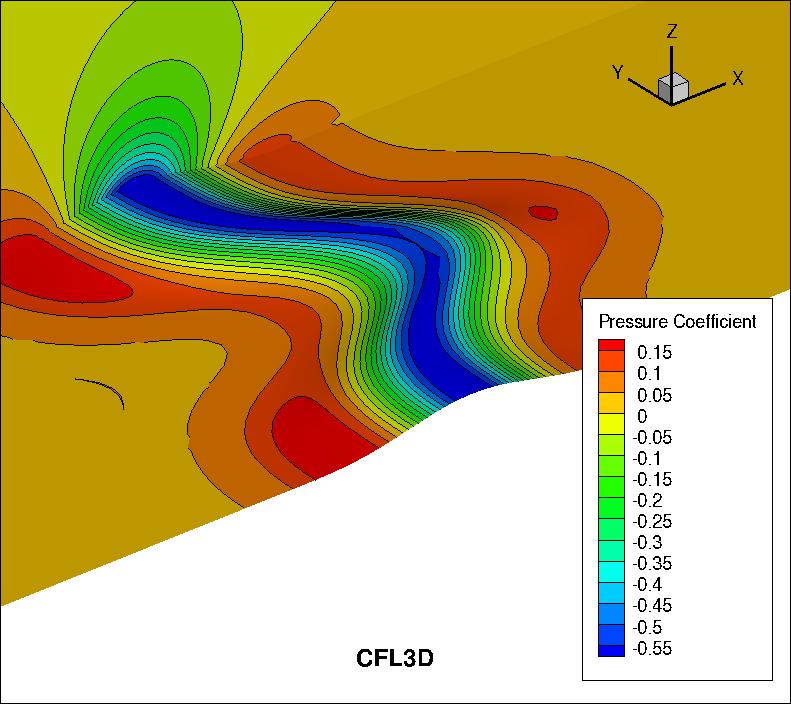

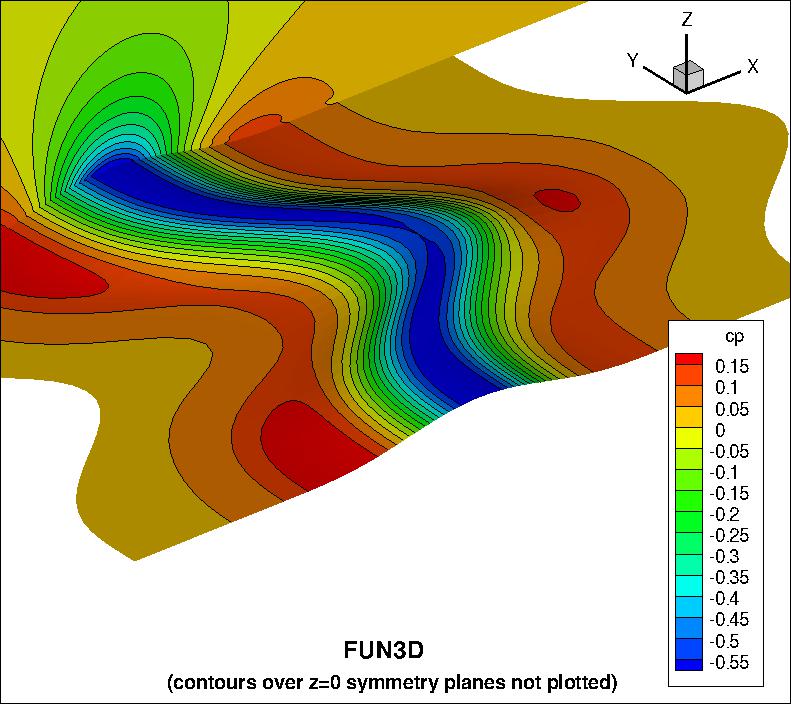
 ) as well as
nondimensional omega from the two codes CFL3D and TAU on the second-finest grid are shown
in the following plots.
Results are extracted at two different x-locations
(z-scale expanded for clarity). Results from the codes are reasonably similar on this grid size
(FUN3D results are not shown here to save space; its results are also similar).
(Note legends do not necessarily reflect min and max values.)
) as well as
nondimensional omega from the two codes CFL3D and TAU on the second-finest grid are shown
in the following plots.
Results are extracted at two different x-locations
(z-scale expanded for clarity). Results from the codes are reasonably similar on this grid size
(FUN3D results are not shown here to save space; its results are also similar).
(Note legends do not necessarily reflect min and max values.)




























